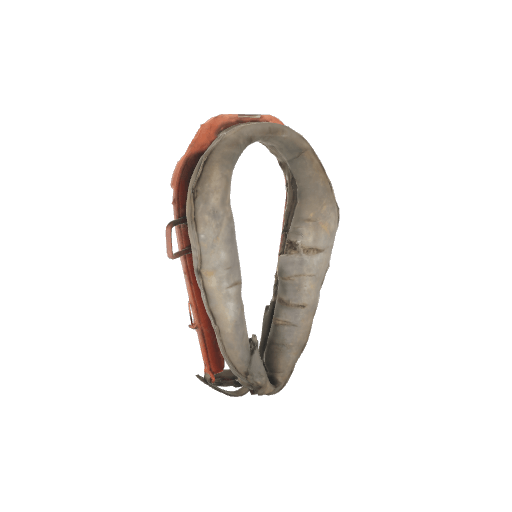Shoulder collar
The shoulder collar is positioned over the horse’s neck to help it pull heavy loads. The collar’s elongated U-shape distributes the weight over the animal’s shoulders without impeding its breathing. The collar is made of wood, metal, and padded leather. The grommets are used to install the rest of the harness.
The first Canadian horses arrived from Europe at the time of Jacques Cartier. From the 17th century on, the horse population grew very rapidly in the colony due to the animal’s great value for work and transportation. In the colony, unlike in France, where only the aristocracy had the privilege of riding horses, the majority of Canadians owned a horse. Like the ox, the horse was widely used in the fields to pull agricultural implements such as plows, harrows, and rakes. In both summer and winter, horses were also used to pull heavy carriages (horse-drawn buggies in the summer and sleighs in the winter) to transport people and supplies.
References
Date: 1850–1950
Origin: North America
Owner: Forge Saint-Laurent. Saint-Anaclet-de-Lessard.
Sources:
Mérand, J. (n.d.). Collier d’épaule [Shoulder collar]. In Encyclopædia Universalis. Retrieved July 27, 2022, from https://www.universalis.fr/encyclopedie/collier-d-epaule/
Rowe, S., & Lambert, G. (n.d.). Canadian Horse: a Quebec Agricultural Treasure. In Encyclopedia of French Cultural Heritage in North America. Retrieved July 28, 2022, from http://www.ameriquefrancaise.org/en/article-306/Canadian_Horse:_a_Quebec_Agricultural_Treasure.html
Séguin, R.-L. (1957). L’habitant et ses véhicules aux dix-sept et dix-huitième siècles [The local and their vehicles in the 17th and 18th centuries]. Revue d’histoire de l’Amérique française, 11(2), 242–269. https://doi.org/10.7202/301834ar
